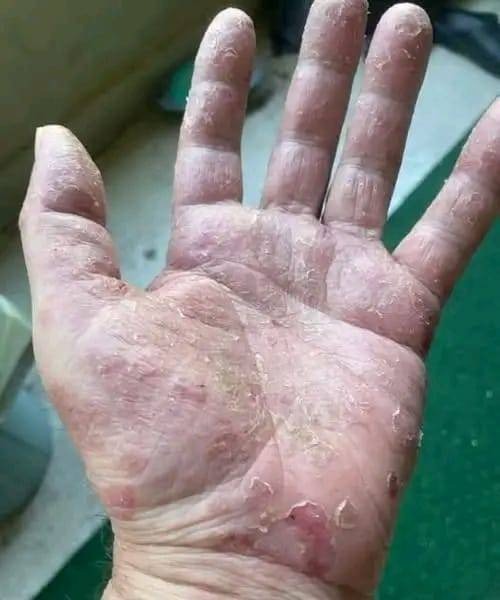Symptoms typically begin with dry, chapped skin and escalate to red or dark brown patches, inflamed scaly areas, burning or itching sensations, and visible vesicles or blisters. Cracking, bleeding, crusting, pus, and severe pain with chronic thickening are alarm signals that require medical attention . These symptoms often mirror other dermatological issues like psoriasis or fungal infections, making precise diagnosis essential.
A multi‑layered management plan for hand dermatitis is critical to provide eczema relief strategies, with combined home care, lifestyle shifts, and medical interventions that repair the barrier and reduce flare‑ups. At home, daily moisturizing with fragrance‑free emollients and ointments rich in glycerin, ceramides, shea butter, petrolatum, or mineral oil is foundational—ideally applied immediately after hand washing and frequently throughout the day . Lukewarm water should be used to wash hands—hot water strips away vital oils—while gentle patting to dry (not rubbing) preserves hydration . Use mild, fragrance‑free cleansers and soaps; select products labeled fragrance‑free (not merely “unscented”) to minimize irritants . Protective gloves—nitrile or vinyl with a cotton liner—should be worn when handling water, detergents, or harsh chemicals; cotton-lined gloves reduce sweat‑related irritation .
For soothing flares, home remedies like overnight application of petroleum jelly under cotton gloves support barrier repair. Lukewarm oatmeal baths (using colloidal oatmeal) can calm inflammation. Aloe vera helps soothe and hydrate, while stress reduction and a balanced diet rich in omega‑3 fatty acids and water support skin resilience . Humidifiers maintain ambient moisture to prevent air‑driven skin dryness .
When symptoms persist or moderate to severe inflammation occurs, pursuing medical treatments under dermatologist guidance is wise. Topical corticosteroids are the mainstay for flare management, yet need caution due to risks like skin thinning, especially with long-term use on thick skin areas like palms . Non‑steroidal topical calcineurin inhibitors like tacrolimus and pimecrolimus offer alternatives for sensitive areas, although their absorption in palmar skin may differ . Phototherapy under medical supervision is viable for chronic or refractory cases .
Systemic therapies—reserved for severe, unresponsive cases—include oral corticosteroids, retinoids like alitretinoin (approved in select regions), immunosuppressants such as cyclosporine and methotrexate, and mycophenolate mofetil—with varying efficacy and potential side effects . Rapidly emerging biologic and small‑molecule therapies are expanding the therapeutic toolkit: dupilumab (IL‑4/IL‑13 inhibitor) shows promising hand eczema improvement in AD patients. JAK inhibitors like delgocitinib (topical pan‑JAK) and oral gusacitinib are in trials with encouraging results for reducing hand lesion severity .
Effectively managing hand dermatitis requires a layered approach combining consistent skin care habits, barrier repair strategies, protective measures, stress control, dietary mindfulness, and professional medical treatments when needed—a comprehensive plan aligned with long‑term AD therapy optimization and functional skin health content goals.
Below is an extended breakdown of each domain:
1. Preventive and Lifestyle Measures
